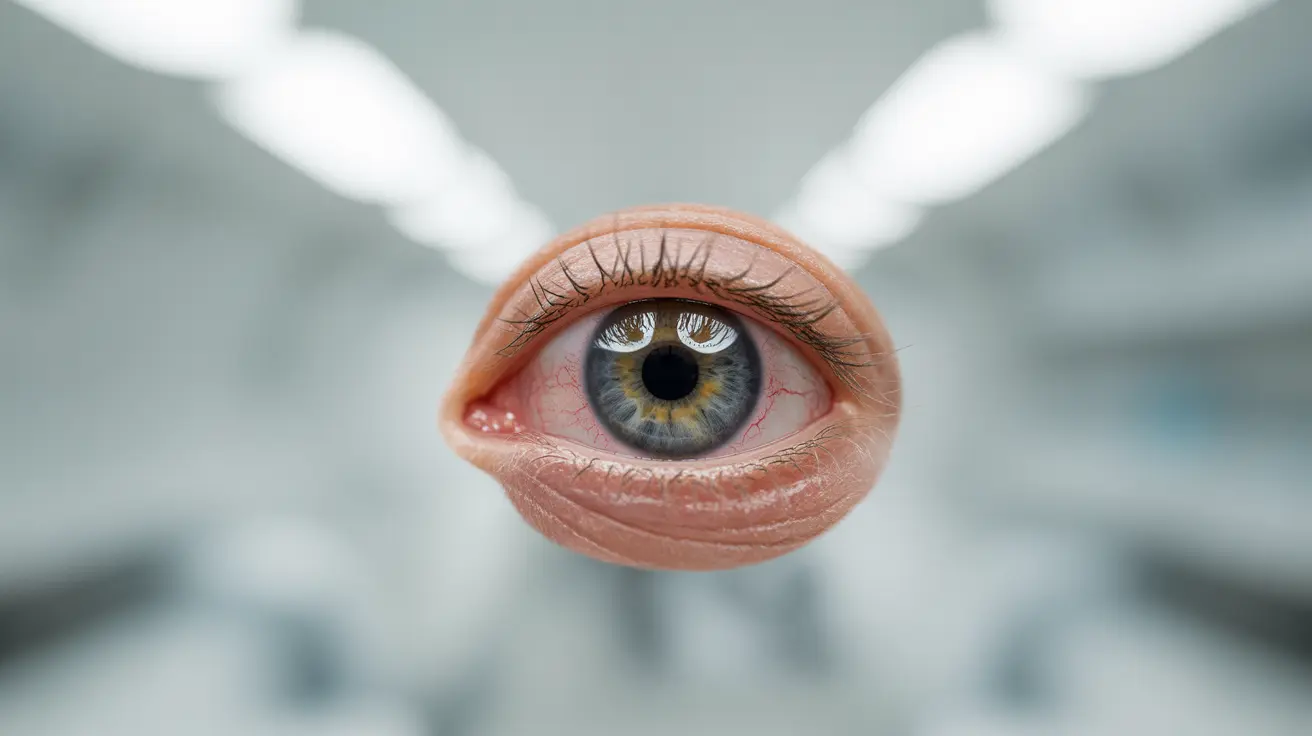Xerophthalmia is a serious eye condition that develops due to severe vitamin A deficiency, affecting millions of people worldwide, particularly in developing regions. This progressive condition can significantly impact vision and eye health if left untreated, making early recognition and proper treatment essential for preventing long-term complications.
Understanding the causes, symptoms, and treatment options for xerophthalmia is crucial for both prevention and management of this condition. This comprehensive guide will explore everything you need to know about xerophthalmia and how to address it effectively.
Understanding the Causes of Xerophthalmia
The primary cause of xerophthalmia is a severe deficiency in vitamin A, an essential nutrient that plays a crucial role in maintaining healthy vision and eye function. This deficiency typically results from:
- Chronic malnutrition
- Limited access to vitamin A-rich foods
- Malabsorption disorders
- Chronic liver disease
- Persistent diarrheal diseases
Early Warning Signs and Symptoms
Recognizing the early signs of xerophthalmia is crucial for preventing its progression. Initial symptoms often include:
- Night blindness (nyctalopia)
- Dry, rough conjunctiva
- Foamy patches on the whites of the eyes (Bitot's spots)
- Increased sensitivity to light
- Frequent eye infections
As the condition progresses, more severe symptoms may develop, including corneal ulceration and potential scarring if left untreated.
Diagnosis and Clinical Assessment
Healthcare providers diagnose xerophthalmia through:
- Comprehensive eye examination
- Medical history review
- Blood tests to measure vitamin A levels
- Assessment of dietary habits
- Examination for Bitot's spots and other characteristic signs
Treatment Approaches
Immediate Interventions
Treatment for xerophthalmia requires prompt attention and typically involves:
- High-dose vitamin A supplementation
- Regular monitoring of eye health
- Treatment of any concurrent infections
- Nutritional counseling and support
Long-term Management
Long-term management strategies include:
- Regular vitamin A supplementation
- Dietary modifications
- Regular eye check-ups
- Addressing underlying health conditions
Prevention Strategies
Preventing xerophthalmia involves ensuring adequate vitamin A intake through:
- Consuming vitamin A-rich foods such as:
- Sweet potatoes
- Carrots
- Spinach
- Liver
- Eggs
- Fish oil
- Regular health check-ups
- Proper nutrition education
- Supplementation when necessary
Frequently Asked Questions
- What are the early symptoms of xerophthalmia caused by vitamin A deficiency?
Early symptoms include night blindness, dry eyes, difficulty seeing in dim light, and the appearance of Bitot's spots (foamy white patches) on the conjunctiva. These symptoms typically develop gradually and may be accompanied by increased sensitivity to light.
- How is xerophthalmia diagnosed and treated effectively?
Diagnosis involves a comprehensive eye examination, blood tests to measure vitamin A levels, and assessment of clinical signs. Treatment typically includes immediate high-dose vitamin A supplementation, followed by regular doses and dietary modifications to prevent recurrence.
- Can xerophthalmia lead to permanent blindness if untreated?
Yes, untreated xerophthalmia can lead to permanent blindness. The condition can cause severe corneal damage, scarring, and ultimate vision loss if not addressed promptly with appropriate vitamin A therapy and medical care.
- What foods are rich in vitamin A to help prevent xerophthalmia?
Foods rich in vitamin A include orange and yellow vegetables (carrots, sweet potatoes), dark leafy greens (spinach, kale), liver, egg yolks, fish oils, and fortified dairy products. Regular consumption of these foods helps maintain adequate vitamin A levels.
- How quickly does vitamin A therapy improve symptoms of xerophthalmia?
With proper vitamin A therapy, initial improvements can be seen within 24-48 hours. Night blindness typically improves first, followed by resolution of other symptoms over several weeks. Complete recovery may take longer depending on the severity of the condition.
Early intervention and consistent treatment are key to successfully managing xerophthalmia and preventing its serious complications. Always consult healthcare providers for proper diagnosis and treatment planning.




